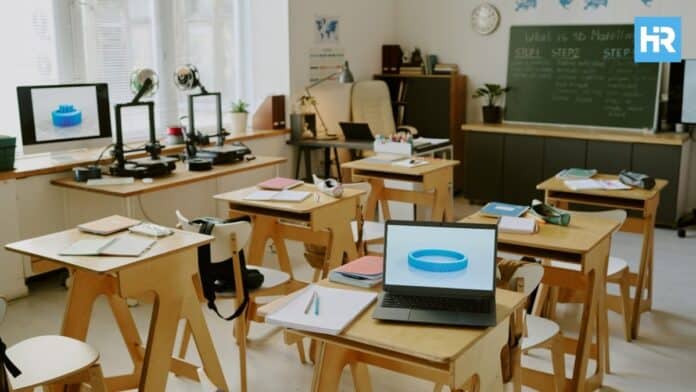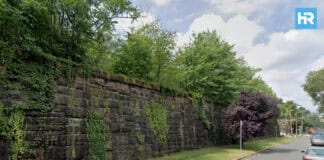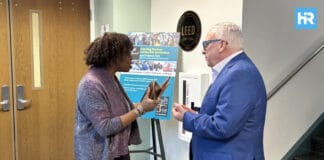Bayonne, New Jersey, has introduced several programs to support its students and community. These efforts focus on keeping students in school, improving neighborhood safety, using technology in smart ways, and protecting the environment. Each program includes clear goals and involves teachers, students, and local leaders.
To explain how these programs work together, it helps to look at each one closely. First is a new in-school support program for students with discipline issues. After that, the focus is continued on community policing. Then comes the new AI committee, followed by a long-running student-led environmental cleanup program.
- Bayonne’s “Positive Steps Forward” program replaces suspensions with support and counseling to help students stay in school and succeed.
- A new Artificial Intelligence (AI) Committee is guiding Bayonne schools into the future with responsible and innovative tech use.
- Bayonne High School continues over 50 years of hands-on environmental activism with shoreline cleanups and tree planting.
Positive Steps Forward Program Changes Student Suspension Process
The Bayonne School District has created a new in-school suspension program called Positive Steps Forward. This program was designed to support students with behavioral issues instead of removing them from school through suspension. The program will take place inside the ice rink building at Bayonne High School. Students who would normally be suspended will instead attend this program during the school day.
Staff from the Special Education department will provide resources to help students with discipline concerns. Counselors and teachers will work with students to identify behavior problems and help them make progress. Students will continue their schoolwork during the day while receiving support and return to their classrooms after they meet specific expectations.
The program includes parents in the process. School officials explained that the purpose is to keep students from being placed in alternative education or night school. The program is structured to give students a clear path to return to regular school routines while still holding them accountable.
Community-Oriented Policing Program Builds Local Relationships
Bayonne has also been working for many years to improve neighborhood safety. Since September 1991, the Community Oriented Policing Unit has focused on creating trust between police officers and local residents. The program is based on building working relationships between police officers and the people in the city. The main goal is to improve public safety and trust by working directly with residents and community groups.
Unlike traditional law enforcement, which often creates distance, this model centers around friendly, respectful interactions. Officers are trained to listen to the community, learn from them, and work alongside them to solve shared problems. In return, residents feel safer, more seen, and more willing to cooperate.
The program also aims to change perceptions—improving how people see police, how officers see citizens, and how both groups define good service. Community policing doesn’t just make law enforcement more effective; it makes communities stronger.
Bayonne’s Community Oriented Policing Unit has partnered with business leaders, social service agencies, religious organizations, civic groups, and non-police city departments. These groups often provide resources, time, and expertise to keep the programs running. In fact, the Crime Prevention Bureau now operates as part of this unit.
The department also works to educate business leaders on ways to prevent crime before it starts and help neighborhoods become more stable and connected.
Artificial Intelligence Committee Explores the Future of Education
Technology is changing the world, and Bayonne wants to make sure its schools aren’t left behind. That’s why the Bayonne Board of Education has created a special Artificial Intelligence (AI) Committee. This committee will study how AI can be used in schools, with a focus on improving schoolwork and helping students learn more effectively. The committee will also create guidelines for using AI responsibly and ethically.
The committee includes 20 members from the school district, including teachers, principals, vice principals, administrators, and technology experts. They will explore the use of AI in areas such as teaching, learning, school operations, and data analysis.
The committee’s main job is to provide strategies that help the school district use AI clearly and safely. The district wants to stay updated with technology while protecting students and keeping learning at the center of its mission.
Bayonne High School Continues Shoreline Cleanup Tradition
While new programs and committees prepare students for the future, Bayonne High School has been leading a movement for more than five decades—one that protects the natural world and teaches students the value of stewardship.
Back in 1971, students from Bayonne High School, including Abraham Karlin, Tom Tokar, and Steven Kachmar, joined the city to organize the first shoreline cleanup of Newark Bay. Tom Tokar later became a science teacher at BHS and led the cleanup program for over 30 years.
Now retired, Tokar still joins cleanups, but Dan DiDonna, an environmental science teacher at BHS, leads the program. DiDonna coordinates the bi-annual cleanups with the Passaic Valley Sewerage Commission (PVSC). Students from the environmental science classes clean the Newark Bay shoreline behind the high school.
While doing so, they see the effects of pollution up close. Plastic bottles, food wrappers, and Styrofoam—which breaks into tiny pellets that resemble fish eggs—are common sights. Occasionally, they find more unusual items like a mattress and box spring, Power Wheels cars, a toilet, 55-gallon oil drums, and tires.
Bayonne’s location makes this work even more needed. The city is part of northern New Jersey’s watershed system, connected to the Passaic and Hackensack Rivers, meaning trash from across the state can end up on Bayonne’s shores. Students learn how far pollution can travel—and what it does to ecosystems along the way.
In addition to shoreline cleanups, BHS planted five trees on campus in October 2023 using grant funding. Environmental teachers and Bayonne Education Association President Gene Woods also participated in the cleanups.
The cleanups give students direct experience with environmental issues, which the school uses to teach responsibility and the effects of pollution.






